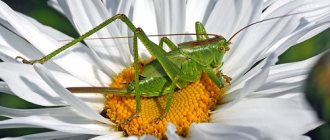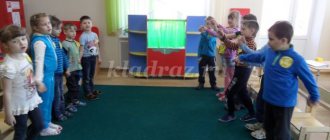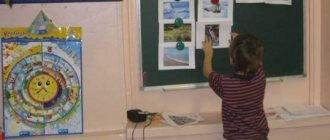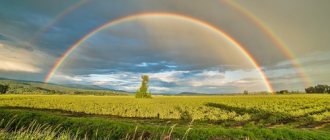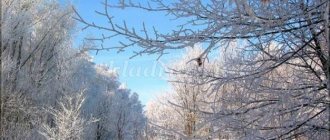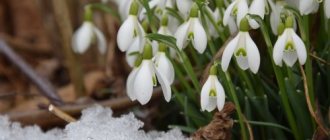From the pages of a textbook
This project work completes a large section of the textbook called “Nature”. And the “red book” is the name of one of the paragraphs of this section.
Let's see what is required of us?
ABOUT! Our good friends are Seryozha and Nadya, inquisitive inhabitants of the textbook. They did something again. Or rather, they did. This time the guys came up with their own Red Book. They placed insects, plants, and animals on her pages. And our children are encouraged to do the same.
That is, you need not to repeat the real, really existing Red Book, but to make your own. It turns out that you can add into it not only those animals and plants that are already under protection, but also any others you want. Well, this expands our capabilities.
In what form should the project be presented? It seems like they are asking to make a Red Book. And the Red Book is, strictly speaking, a book.
But! In the workbook, space is also reserved for this project. This means that it can be done in a notebook.
Let's start with it.
Birds
The large territory of the country is conducive to the settlement of various natural areas by all kinds of birds. About 100 species are listed in the KKRF. Many of them are common in national parks, game reserves and nature reserves.
black crane
Most black cranes nest in the country. The birds form several populations, whose habitats extend from the Central Siberian Plateau to the Sikhote-Alin.
black crane
The number of black cranes around the world is about 11,000. They feed on a variety of foods - both animal and plant foods. They prefer swampy areas and woody vegetation.
The population of black cranes is most actively threatened by human economic activities in the habitat areas of these birds. They migrate to Japan, where living conditions are quite good, but epidemics occur regularly.
Interesting fact : the black crane is the least studied among its relatives. The species was discovered only in 1974.
Siberian Crane
The Siberian Crane (white crane) is distributed exclusively in Russia, and in the form of two separate populations - eastern and western. They are very demanding of living conditions and prefer an aquatic lifestyle. Because of this, maintaining the appearance is quite difficult. The number of West Siberian Siberian Cranes is 20 individuals, and the total number in the world is up to 3000.
Siberian Crane
Difficulties also arise during migrations. The birds head to China, where the areas are too urbanized - the swamps are dried up, the land is used for agriculture. In order to preserve the population, ornithologists from different countries, including the Russian Federation, are working together on the special project “Sterkh” - they are looking for new ways to restore the number of birds.
Steppe Harrier
The steppe harrier is a relatively small migratory bird. Distributed in Central Asia and Eastern Europe. Belongs to the predators. Prefers natural areas such as steppe, forest-steppe and semi-deserts.
Steppe Harrier
Birds often move within their range, so it is difficult to determine their numbers in the Russian Federation. The number of individuals in the world is about 40 thousand. The species is considered rare and endangered.
Steppe harriers have several natural enemies (eagles, imperial birds). Also, significant damage to their habitats is caused by human influence - the destruction of vegetation in meadows and thickets of bushes in the steppe. The total number of birds in Russia is about 5000.
White seagull
Ivory gulls make nests on the sea coasts of the Arctic Ocean. The only representatives of their kind. The exact number of individuals has not been established, as have the reasons for the decline in the species. Currently, the ivory gull is at low risk of extinction, but still needs protection.
White seagull
Possible factors negatively affecting the population are global warming, illegal hunting, unfavorable environmental conditions. The diet of seagulls consists of crustaceans and fish.
Black-throated Loon
The black-throated loon is a member of the loon genus. Birds live in the northern part of Russia. They prefer to build nests in reservoirs, as well as in the tundra zone. Lately, loons have noticeably moved north.
Black-throated Loon
This was influenced by human activity - fishing and actively developing tourism in the coastal zone. The increase in the number of birds is hampered by predators that actively hunt for their eggs. Loons are also often caught in fishing nets.
Project protection
What does it mean to protect a project? This means giving a short presentation of your work in front of the class. Pick up (in this case) a notebook, go to the board, speak briefly on the topic of work, adhering to a pre-planned plan.
The main thing is not to go too deep. 5 minutes is the maximum maximum! There are many people who are passionate about, as well as those who are forced to))) defend their work in the classroom. So save your time. The lesson, as they say, is not rubber-stamp.
The hardest thing is to start. Why? And from the definition of the Red Book, which is already written in the workbook. This will be a great short introduction that will easily flow into the first point of our plan.
In practice it might look like this:
Great! A start! The first point of the plan has been completed. Let's try to move on to the second, which involves telling a story about the benefits that the “residents” of the project bring.
There are 12 “inhabitants” in our book. There is no need to talk about everything during the presentation. Four will be enough.
But! It is necessary to know about the benefits of the remaining eight. Don’t forget that defending a project involves answering questions from listeners. One of your classmates may ask about the benefits of a specimen not mentioned in the presentation. So, be prepared for this.
Well, we still have the final point of the plan about ways to protect animals and plants.
If you think about it, it turns out that the methods of protection are universal for all representatives of ours, and any other Red Book.
- Do not kill (do not pull out, do not trample, do not chop if we are talking about plants).
- Help in difficult times (for example, feed or treat).
- Do not pollute, take care of nature (do not litter, do not burn fires in forests, do not dump waste into rivers and lakes, install treatment facilities on factory pipes, etc.)
- Restore (plant trees, go to cleanup days, etc.)
It is clear that a child will not go to a factory and install a modern filter on a pipe. But he is quite capable of not picking a flower, not breaking a tree, not killing a beetle, not throwing a candy wrapper past the trash can.
Well, we figured out how to make a project in a workbook and how it can be presented.
Let's move on to the next, more creative way of designing this work. We will make a real Red Book. Although, rather not a book, but a book that you can bring to school in your pocket.
Reptiles
Approximately 70 species of animals represent the class of reptiles in the country. About 20 species are listed in the KKRF. They are common on the coast of water bodies and in forest areas.
Far Eastern skink
Far Eastern skink
The Far Eastern skink is a genus of lizards. Lizards live on Kunashir Island - near forests and on the river coast. The number is several thousand individuals. Predators such as minks and economic activities pose a danger to lizards.
Common copperhead
A representative of the colubrid family in Russia, it is distributed in the southern part of European territory. Copperheads swim well, but they try to avoid dampness, preferring dry meadows and clearings. The main diet consists of lizards.
Common copperhead
The danger for them comes from birds of prey, hedgehogs, rats, etc. Copperheads are also often mistaken for poisonous snakes. The main reason for the population decline is the use of pesticides in agriculture.
Gyurza
The viper is the largest representative of the genus of poisonous vipers. The most common in the South Caucasus (Transcaucasian viper). The main diet consists of rodents. It is considered a species whose numbers are declining. Currently there are about 1000 individuals. This happens mainly due to human activity.
Interesting: Wolf
